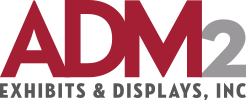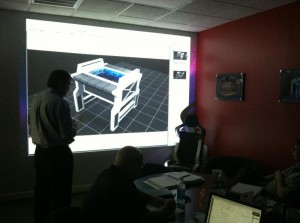Triangle tips discovered through one company’s experience:
In the world of Museum Design, education, creativity, and budget can often collide in a Bermuda triangle of sorts. Many of our incredible museum clients have creativity and quality educational content that are in danger of disappearing when the budget numbers enter the trio.
It has also been said that one can:
- Design something quickly and to a high standard, but it will not be cheap.
- Design something quickly and cheaply, but it will not be of high quality.
- Design something with high quality and cheaply, but it will take a long time.
This triangle is often referred to as the Triple Constraint or the Iron Triangle and is familiar to most project managers, if not by name then at least in practice. So how does a museum or company deal with these triangular traps?
I’d like to introduce you to a third triangle designed to contend with the latter two. It’s what we humbly call the ADM Triangle. The ADM Triangle works like this: Applaud the creativity, Determine the priority, andManage accordingly.
For example, one of our favorite clients has currently contracted us to fabricate a futuristic Moonbase exhibit. The content is fascinating, the team is incredibly creative, and with an unlimited budget the sky wouldn’t be the limit (pun intended). As with so many projects, we’ve had to employ the ADM Triangle to avoid the triangular traps.
Here’s how that looks using our Moonbase example:
1. Applaud the Creativity. If you are working with a creative team or clients, allow them to brainstorm as if there were no budget constraints. We may not be able to ship a guest to the actual moon, but talking through what would happen if we could afford to, can provide insight to details that could otherwise get overlooked. Sounds and aesthetic embellishments that are not expensive can give authenticity to the experience.
This concept can be applied to any business experience. Think of your ideal, non-budget-restricted dream, and work backwards incorporating as many elements as you can.
2. Determine the priority. Once the brainstorming is done, begin an “if/then” process with your client and really listen. Oftentimes the creative process has made them passionate about certain things and more willing to let other things go. A talking robot might be cool, but a driving-on-the-moon rover experience might be cool and reach multiple educational goals simultaneously, therefore taking preference.
In the business world reaching ten target market clients might offer better results than a mass reach to hundreds of unknowns. Sometimes you don’t know until you make only one the priority.
3. Manage accordingly. When your goal is to have high quality, competitive pricing, and reasonably quick turnarounds, the Iron Triangle can be a menace. However, within a project pieces can be broken down and managed with two triangle edges in mind building up to the third. An interactive space game, for example, might be costly and take a while to program, but the quality could be enhanced if the designer is given leeway to reproduce the template and/or graphics for other games in the experience.
In other words, look at the Iron Triangle as a balance scale and decide which way it should tip to ensure that quality, timeliness, and budget effectiveness are all represented on some level.
It is a rewarding process when creativity, education, and budget requirements can complement each other instead of competing. We’ve found great success managing projects for our clients by helping them prioritize their needs and explore creatively. We’d love to hear from you and we will keep you posted as we journey to the moon and back again.


